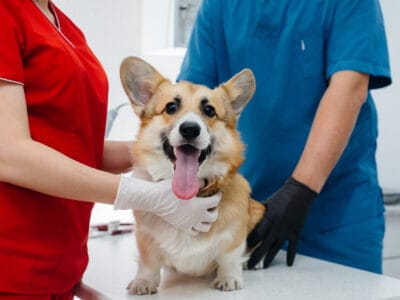24 Hour Technical Support & Seattle Computer Repair
support@seattlecomputer.repair (206) 657-6685
We accept insurance coverage!
King County Computer Repair & Tech Support
King County Computer Repair & Tech Support
- Details
- Tech Support by: Emerald City IT
- Support Field: Computer Service in Seattle
- Support Category: Central Seattle
Because Seattle is surrounded by water, it has a wide range of naturally occurring swimming locations. Canals, lakes, rivers, and, of course, the Puget Sound, all provide places for a quick dip. For those wanting to avoid seaweed and critters, there are also a few public outdoor pools.
Dozens of swimming holes and beaches are waiting to be discovered across the city. As of Memorial Day weekend, lifeguards are on duty at most of them. These are the greatest locations to appreciate a sunny day in and around the city. Enjoy your time in the water!
Green Lake Beach
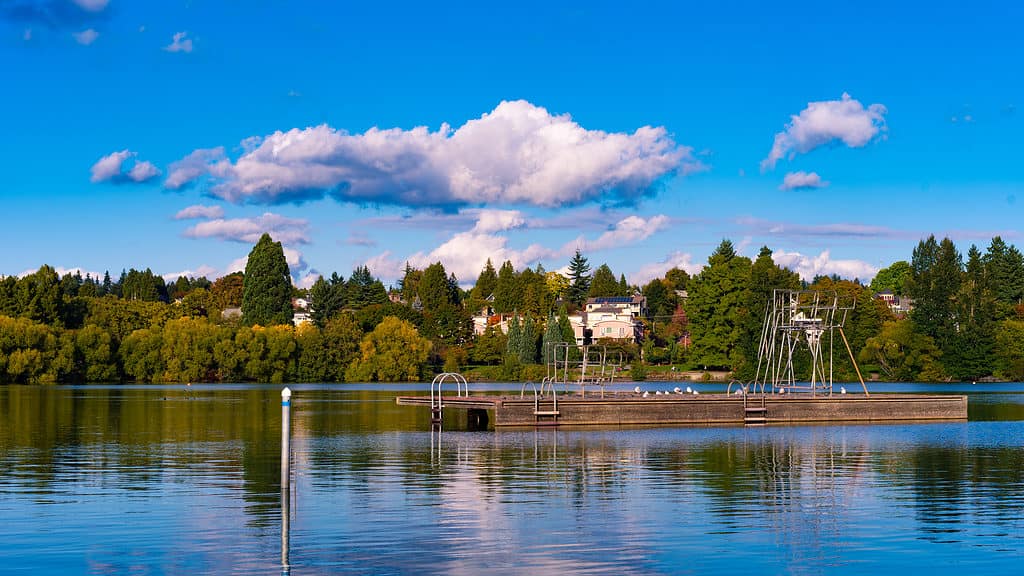
©Yiqi Yan/Shutterstock.com
East Green Lake Beach and West Green Lake Beach are two well-liked swimming beaches on Green Lake. A few of the perks include swimming rafts, diving boards, and lifeguards on duty throughout the summer. You can take a break from the water at the basketball courts or grab a snack at the food vendors. A kids’ wading area and restrooms come in handy for those with little ones.
Both beaches have parking, and a bicycle can easily get you to the park. The water is moderately warm and clear, and the two beaches are sandy! This area also features roomy fields and two islands. Additionally, the lake has a 2.8-mile walking route around it. Green Lake is simply the best summer playground in north central Seattle, regardless of your age!
Lake Sammamish State Park
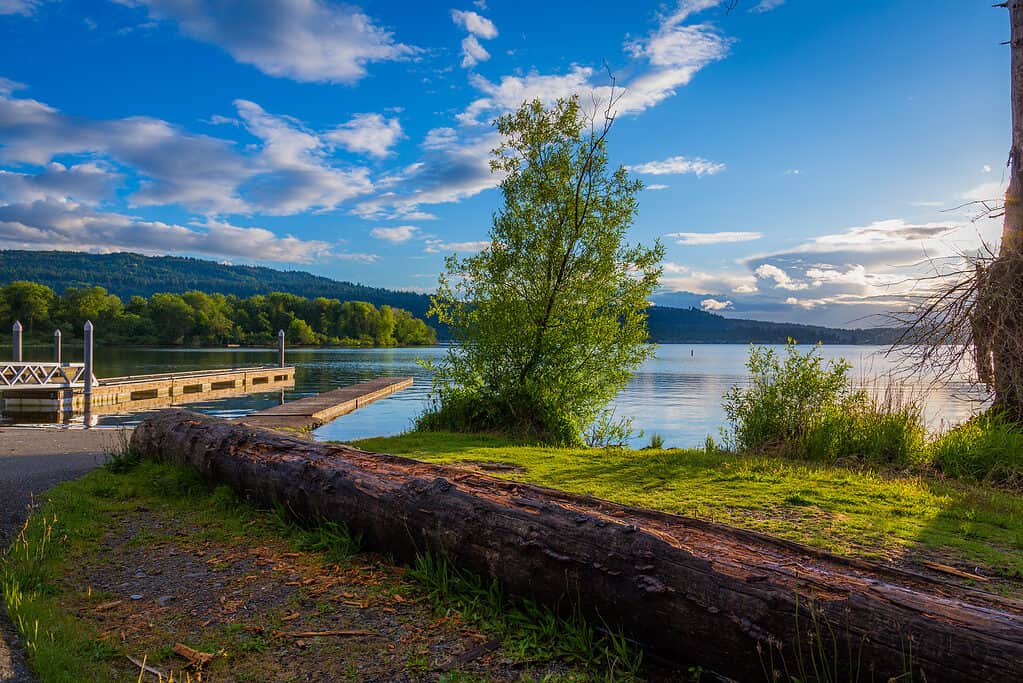
©Khomlyak/Shutterstock.com
Want to spend the day at a beach close to Seattle? Visit Lake Sammamish State Park, a day-use park with 531 acres and 6,858 feet of lakefront! With two lakeside beaches, pathways through marshes, and a deciduous forest, this park offers a family-friendly outdoor experience away from the city. For those looking to canoe or paddleboard, the beach at Tibbetts offers rentals.
Four Native American tribes once lived in the areas around the lake, giving it significant cultural value. As a bonus, blue herons and bald eagles make their nests in the park. This beautiful place near Seattle has so much more to offer than just a place to cool off!
Big Eddy Park
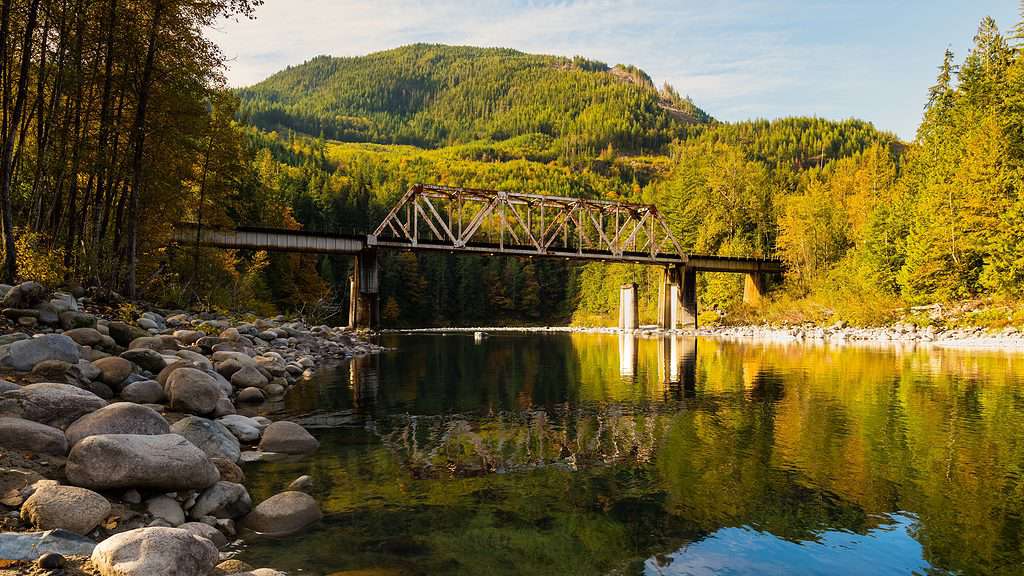
©Ian Dewar Photography/Shutterstock.com
One of the best swimming spots on the Skykomish River is Big Eddy Park, which is 2.5 miles upriver from Gold Bar. The park’s sandy beaches, deep water, and gentle current make it a great place to cool down.
Two pools have been hollowed out under the Burlington Northern Santa Fe railroad bridge. They provide safe waters for even the youngest children. However, remember that the river’s turquoise waters are supplied by the Cascade Mountains and are chilly all year round.
Continue driving into Stevens Pass, 3.5 miles past Index to Eagle Falls. Cold, deep pools and granite blocks lay beneath this chaotic cascade. Head here if you’re searching for extra swimming holes and cliff jumping.
Twin Falls
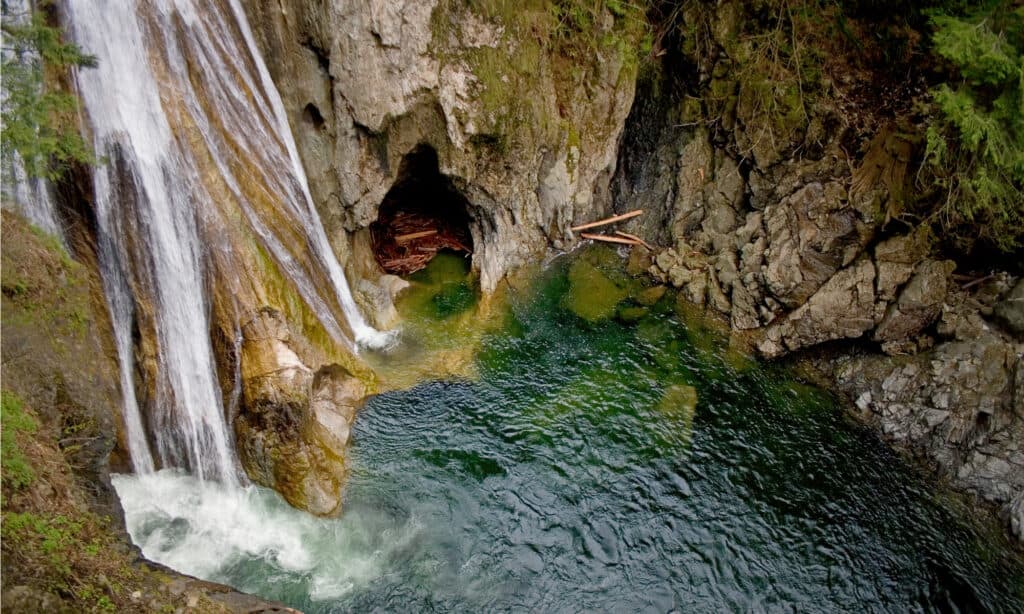
©Stacey Lynn Payne/Shutterstock.com
Visit three waterfalls just off I-90 on this short, family-friendly path. You’ll find Twin Falls within the Evergreen State’s Snoqualmie area in King County. This is the South Fork of the river’s tallest waterfall. Following Kanim Falls and Snoqualmie Falls, it is the third tallest of any of the Snoqualmie’s branches.
Twin Falls is really made up of three separate sections of waterfall. The first phase consists of two 45-foot drops that combine to form a sizable basin. Because of how the gorge is shaped, this area is largely concealed from the trail. The second series is a two-stepped, 30-foot drop that begins upstream of the lengthy trail bridge that crosses the river. The bridge is directly under a 20-foot drop. The largest drop, a 135-foot plummet over a rock protrusion, comes last.
Magnuson Park Swimming Beach
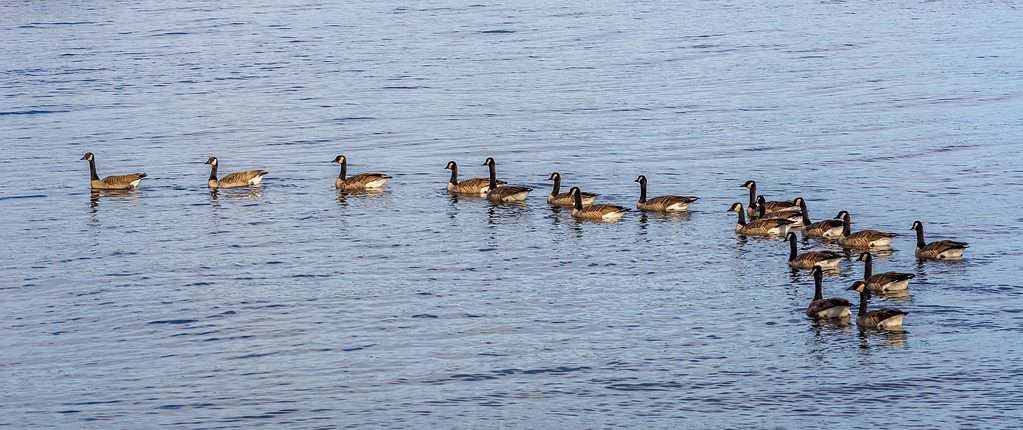
©Marv Vandehey/Shutterstock.com
Discover a fantastic urban park that features remnants of Seattle’s military past and sustainable present! Northeast Seattle’s Warren G. Magnuson Park is located on a beautiful mile-long section of Lake Washington’s waterfront. It is Seattle’s second-largest park with 350 acres.
Home to one of Seattle’s bustling waterfronts in the summer, Magnuson Park is well-liked for a good reason. Due to the shoreline, this Lake Washington beach is excellent for swimming and has an easily accessible entry point. You may rent a paddleboard or take low-cost sailing classes at the Sail Sand Point close to the swimming beach.
Note that Lake Washington currents can pull swimmers away from the shore. Additionally, there is not a lifeguard at the swimming beach in Magnuson Park. If safety is a concern, stick to shallow or monitored water.
Green River Gorge
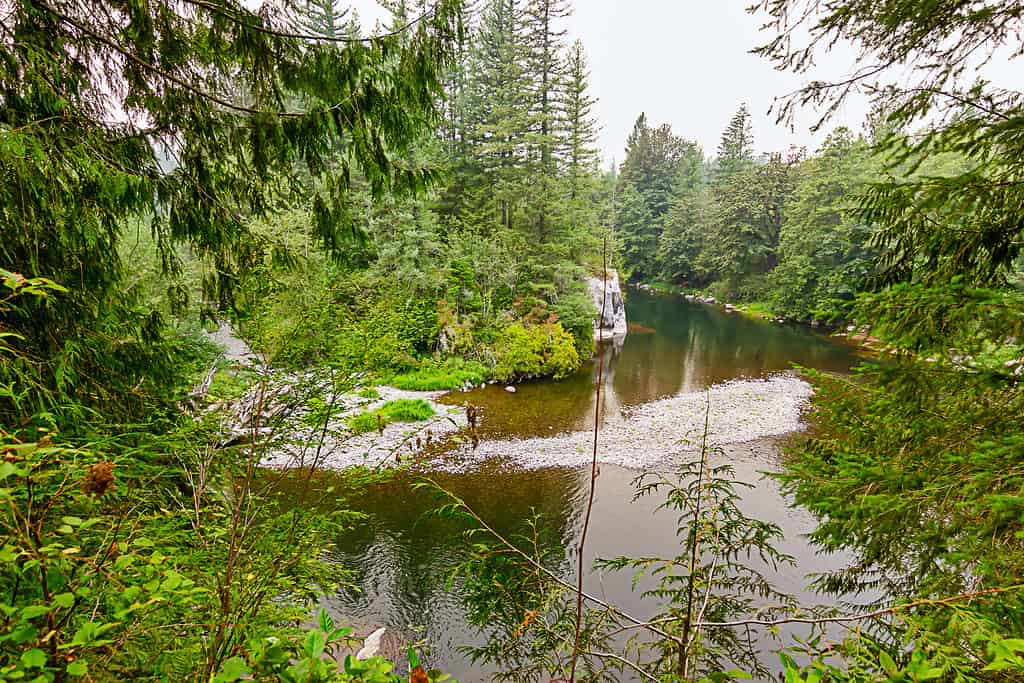
©TayaJohnston/Shutterstock.com
The Green River Gorge Swimming Hole is a well-known “locals-only” location. The red gate is located on the north side of Enumclaw Franklin Road SE, a short distance from its unmarked trailhead. A simple route leads down to the Green River, after a short distance on an ancient road.
Any time of year is fantastic to visit this location in the Green River Gorge! Whitewater boaters are drawn to the channel during the winter when high water levels flood it and create waves. You might even see kayakers brave the chilly winter weather to paddle one of Washington’s best whitewater runs.
The months of July and August are ideal for swimming in the gorge because the river levels are typically low enough. And the hottest days are the best days! The Resort’s Bridge Overlook, where multiple rivers flow into the 300-foot-deep canyon, have the best views of the gorge. This point is two miles northeast on Enumclaw Franklin Road Southeast.
Jetty Island

©CL Shebley/Shutterstock.com
Despite being a 45 minute trip from Seattle to Everett, Jetty Island is undoubtedly one of the top swimming spots near Seattle, particularly during peak summer.
The silky beaches and distinctive beach ambiance of this island are undeniable. They were created through sand dug out from the bottom of Puget Sound.
The area off Jetty Island is shallower than at most Puget Sound beaches, allowing sunshine to warm the water. Due to this, Jetty Island is one of the few spots in Puget Sound where the water isn’t icy-cold.
If you wish to swim in the Puget Sound, choose beaches with slowly sloping tidal flats. These shallow spots allow the sunlight to warm the water more effectively than swimming holes with deep drop offs. Additionally, only go during the hottest part of the year.
Newcastle Beach Park
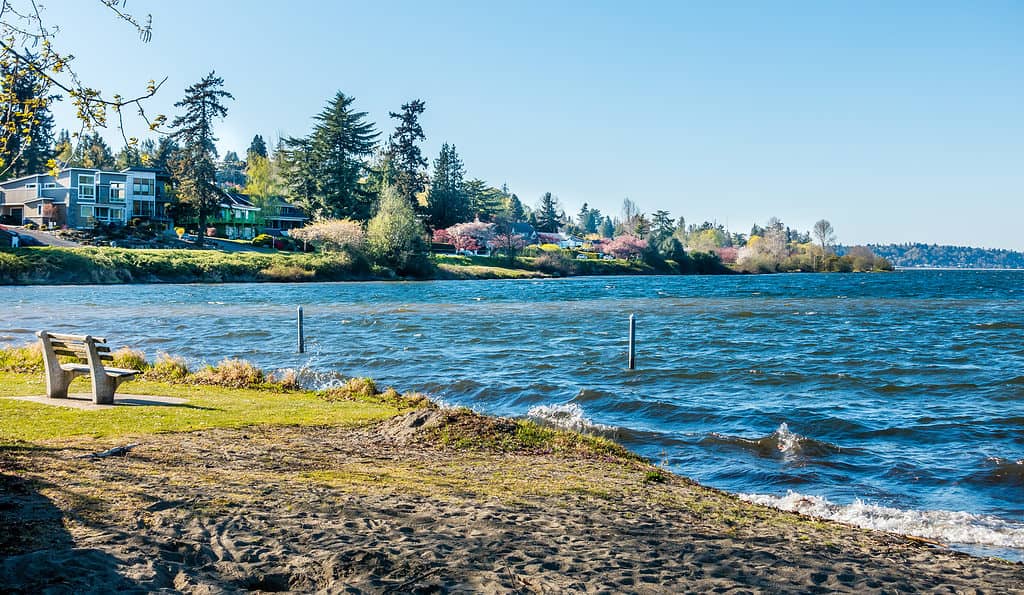
©GeorgeColePhoto/Shutterstock.com
Newcastle Beach Park, Bellevue’s biggest beach park, is situated on the banks of Lake Washington. There are several recreational opportunities in the park suitable for a family vacation. Schedule a reunion on the spacious flats or hike along the 3/4-mile loop of the nature trail. For more relaxing activities, lounge on the white sand beaches or go out to the floating swimmer’s dock.
The park is a well-liked gathering place for families and groups of friends, thanks to its three picnic sites. One even has a shelter, a BBQ, and a vibrant play area for kids. Guests can enjoy fishing on the 300-foot wooden dock, or launch their canoes, kayaks, or paddleboards.
Up Next
- Details
- Tech Support by: Emerald City IT
- Support Field: Central Seattle
- Support Category: Magnolia
By
Cadence Real Estate is continuing to dispose of multifamily properties in its Seattle portfolio. In June, the company sold off a 42-unit property in the Westlake neighborhood. Now, one month later, King County records show the Seattle-based investment and development firm is selling the Cavanaugh Apartments in the city’s Magnolia neighborhood.
According to public records, the property is located at 3539-3555 27th Place W. and was sold to a San Marino, Calif.-based entity affiliated with Magnolia APT. Investments LLC for $20.7 million, or $414,796 per unit.
Built in 1969, the Cavanaugh Apartments offer 50 one- and two-bedroom apartment units in a four story building. Apartments.com also indicates that units at the property range from 736 to 1,060 square feet, while ranging in price from $2,245 to $3,025 per month.
The apartment building also features various onsite amenities for tenants, including a bbq area and firepit, a fitness center, an off-leash dog park, storage units, covered parking and more.
Situated in the city’s Magnolia neighborhood, the property offers easy access to popular attractions, like the Ballard Locks and Discovery Park. The property is also adjacent to Magnolia Manor Park and within walking distance to many breweries and restaurants.
In June, the company traded its June on South Lake Apartments for $20.1 million, or about $478,571 per unit. The property, which is located at 1622 Aurora Avenue N. – was developed in 2021 and was sold to another San Marino, Claif.-based entity affiliated with June South Lake LLC.
Cadence Real Estate was founded in 2008 and specializes in the acquisition and development of multifamily properties throughout Seattle. Since its founding, the company has acquired over 40 multifamily projects along with a total transaction volume of more than $350 million.
- Details
- Tech Support by: Emerald City IT
- Support Field: Magnolia
- Support Category: Briarcliff
Seattle prides itself in being a pretty green city, but depending on where you live, navigating it car-free can prove pretty difficult sometimes. The good and bad news: It’s easier in some neighborhoods than others. Let’s take a closer look.
While it’s hard to know exactly how walkable and transit-friendly a city is without living in it, Walk Score attempts to data-fy car-free livability. It calculates not just the walkability, but bikeability and transit-friendliness of cities. Overall, Seattle rates a 73 in walkability—that means it’s “very walkable,” or that “most errands can be accomplished on foot.”
We didn’t do quite as well in bikeability and transit-friendliness, we still ranked not-impossible, with 63 and 57, respectively. That’s “bikeable” and “good transit,” so we’re in decent shape, but still pretty far behind, say, San Francisco.
How does that stack up by neighborhood? Here are Seattle’s best and worst neighborhoods for walking, riding public transit, and biking. Walk Score is a big factor here, but each neighborhood has its own set of advantages, setbacks, and quirks.
Seattle’s most walkable neighborhoods are clustered around downtown
Seattle’s highest Walk Score goes to the easiest commuting neighborhood, downtown, with a whopping 99. Pioneer Square comes up next with 98. But there’s a big issue with both these neighborhoods: They aren’t as great everyday at providing amenities for people who spend time here after close-of-business. Grocery store options, for example, are limited (while it seems romantic to do all your grocery shopping at Pike Place Market, in practice it’s not especially sustainable), although the addition of the downtown Target helps a little and the IGA on Third isn’t nothing. Many of the parks are going to be more large patios.
Two other neighborhoods in Walk Score’s top five—First Hill and the International District, both with 97—strike more of a balance, with plenty of green public space and large grocery stores in the area, plus easy walkability to downtown employment and other errand-running. While South Lake Union also has more greenery and after-hours fun, note that its major, big grocery store is a Whole Foods, so it might be harder to stretch a budget.
Seattle’s least-walkable neighborhoods are on the outskirts
Rainier View, tucked just below Rainier Beach, is the most car-dependent neighborhood in Seattle by a landslide, with a Walkscore of just 23, a ranking that indicates that “almost all errands require a car.”
But other neighborhoods on different outskirts aren’t doing so hot, either: Matthews Beach, east of Lake City and north of Wedgwood, still requires a car for most errands, with a Walk Score of 38. Arbor Heights, deep in West Seattle, is right behind at 39.
Seattle’s most transit-friendly neighborhoods are Downtown, the ID, and Pioneer Square
With all three of these neighborhoods serving as major transit hubs—including light rail—it’s no surprise that Downtown, the International District, and Pioneer Square all have perfect transit scores of 100, according to Walk Score. This is true in practice, too.
Downtown is Seattle transit’s most common transfer point, and is home to multiple bus stations and bus stops on almost every block, plus a couple light rail stops, although the difference between a bus on Fourth and a bus on Sixth can be deceptively big since it’s on a steep hillside. The International District is a major transit hub, with a bus station, light rail, the First Hill Streetcar, and multiple high-traffic surface bus stops. Pioneer Square is much of the same: light rail, streetcar (two lines soon), and multiple buses above and below the surface. King Street Station, where commuter rail to the ‘burbs and Amtrak to everywhere depart, is right between Pioneer Square and the ID.
Honorable mention here go to Capitol Hill and the University District. While some parts of the Hill are more transit-friendly than others—you’re going to have fewer options on the north end of it, for example—in its more central parts, you have a light rail and multiple bus lines. The University District is planned around trucking students in from all over, and the streets bounding campus are basically all little transit stations (and while the light rail station isn’t really in a residential area yet, it’s nearby).
Seattle’s least transit-friendly neighborhoods are Magnolia, Alki, and Madison Park
Briarcliff, a small neighborhood on the west side the already transit-remote Magnolia, is the least transit-friendly neighborhood in the city, according to Walkscore—they give it a 34, or “some transit.” It is served by the 24, but it stops running all the way west around 9 p.m.
Madison Park is primarily served by just the 11—which runs frequently, but is just one route that can get held up really easily. Eventually, they’ll get a bus rapid transit line up Madison Street, but for now, they’ve been given a Transit Score of 35.
Alki is also toward the bottom. Although it’s a popular neighborhood, it’s primarily served by one bus route that runs along the coastline, the 37. The 50 also serves the neighborhood, but doesn’t head downtown, although it does connect to the Othello light rail station. The 56 ends its run at the center of the neighborhood, but only runs on weekdays. It has a transit score of 35, but to push back a little bit on this: If you’re toward the northern edge of the neighborhood, it’s not too far from the Water Taxi to downtown.
South Park, Seward Park, and Rainier View are also generally underserved, although the latter two recently got a responsive shuttle for light-rail connections.
Seattle’s most-bikeable neighborhood is the University District
The University District is loaded with bike lanes—including parts of the Burke-Gilman trail and a few protected bike lanes—and relatively flat by Seattle standards. That adds up to a Bike Score of 85, or very bikeable: “Biking is convenient for most trips.”
These same traits (aside from the Burke-Gilman) give Green Lake a score of 87.
Bear in mind here, though, that even though a neighborhood might have protected bike lanes, it doesn’t mean good connections to downtown. The University District has a little advantage here, since the Burke-Gilman makes an easy connection to the Westlake Cycle Track, although that’s a little difficult to navigate once you hit South Lake Union.
Fremont (bike score: 80) and an adjacent slice of north Queen Anne get honorable mentions here, too, for a similar reason: the Burke-Gilman and the Westlake Cycle Track. Plus, Fremont has plenty of bike shops, too.
Seattle’s least-bikeable neighborhoods look a lot like the least-walkable
Rainier View, once again, brings up the rear in bikeability, with a score of 20: “minimal bike infrastructure.” It’s beyond even the options South Seattle does have, like the Chief Sealth Trail, and is too far east for any meaningful proximity to the Green River Trail.
Arbor Heights is the next-least-bikeable according to Walkscore, with 28. This is also a pretty accurate assessment: In an already-hilly area, it’s especially hilly (see: heights), without any mitigating factors like bike lanes that could make cycling easier.
- Details
- Tech Support by: Emerald City IT
- Support Field: Central Seattle
- Support Category: Interbay
“Seismic” buttons in Seattle’s elevators hide ubiquitously in plain sight. When I was new to the city last year, these buttons were a reminder that I had moved in beside a quiet danger. I was intrigued by other reminders. Signage announcing seismic improvements to elementary schools. Housing built beneath slopes obvious to be serious landslide hazards. Conversations with friends veered into zombie-apocalypse territory almost instantly. We would survive with kayaks, liquor and scaling buildings. When I would broach the science around Seattle’s geological threats, plans trended back towards the liquor.
Seattle ranks highest among the nation’s cities for risk of exposure to a major disaster. In spite of this, preparedness is an ongoing challenge among residents, with many not understanding all of the threats that exist and the most important preparations to make.
A layer cake of geology nightmares
Most hazards faced by the city of Seattle result from the area’s geology and climate. The blend of conditions – high-density urbanization with high seismic and volcanic activity, steep terrain, and so much rain – means that hazards do not occur alone. An event in one category should be expected to trigger events in others.
The result is what I call a “geology nightmare layer cake.” Imagine a hastily conceived science fair project of mud, gravel, and cut-up sponges on a wobbly table, and then imagine what you would have to do to get something solid to stay put on top while standing in the shower. Two ill-conceived years of engineering geology school had accustomed me to the hidden perilousness of such challenges. More interestingly, it accustomed me to the people who think about them for a living. One professor, a man with an infectiously sunny disposition, would sketch undesirable soil profiles on the chalkboard and explain short-sighted building mistakes via stick-figure orphanages falling into sinkholes. This was a class filled with real photos of people’s cars and homes partially buried in swamps. It was a good class.
Seattle’s layer cake starts with a cracked plate. The seismic risk under the city itself comes from the Seattle Fault Zone, which extends from the Cascades to Whidbey Island, running directly under the city and the Sound. Earthquakes of historic proportions occur a few hundred years apart, but can be wildly destructive in the span of a few minutes’ shaking. Many residents remember the Nisqually quake of 2001, a magnitude 6.8 earthquake which caused 40 seconds of shaking and injured 200 people. Some may also recall the 6.5 magnitude quake of 1965 which killed three people and caused roughly $12 million in damages and closed the state Capitol building in Olympia due to damages.
In spite of the danger, our region owes much to these crustal movements: mountain ranges come from “wrinkling” under the stresses of tectonic pushing and pulling. The dumbfounding transition from high desert to rainforest over the Cascades is owed to our mountains’ rain shadow effect, in which a mountain range acts as a kind of “scraper” for directing atmospheric moisture downwards to one side.

Atop our broken cake plate is a crumbly mess of dessert. The rock and soil under our pavement is a combination of loose gravel and sand deposited when much of the area was covered in glacial ice, as well as finer layers of mud deposited as the glaciers melted and retreated northward. There are also peat deposits, which form in wetlands when plant matter cannot completely decay and instead turns into a layer resembling a soggy sponge. These conditions make many areas in the city vulnerable to liquefaction. Liquefaction is a process in which wet compacted sediment can turn from solid to quicksand when shaking begins, and back to solid again once it stops, trapping submerged objects, vehicles, and even segments of buildings.
Many neighborhoods immediately surrounding Elliott Bay are also at risk for tsunami inundation after an earthquake. These include the low-lying areas of Magnolia, Interbay, Queen Anne, downtown along Elliott Avenue and Alaskan Way, and areas around Harbor Island. A tsunami generated in the Pacific will likely dissipate in the complex shape of Puget Sound. But a worst-case Seattle Fault earthquake tsunami could cause serious inundation damage because it would come from the Sound itself. Seismologists have determined that such a quake occurred in 900 A.D., and two similar events occurred since humans settled in the region 16,000 years ago.

Tectonic movement can also be triggered by volcanic activity. Fortunately, much of nearby Mount Rainier’s daily volcanic activity is benign. Most do not realize that stereotypical lava and explosion is not the only dangerous volcanic activity. Events can include the venting of dangerous gasses, hot ash, or an especially difficult hazard called pyroclastic flow or lahar.
Lahars are flash floods of hot lava, ash, and debris. If an eruption lacks the pressure to send lava skyward, eruptions can push lahars down the volcano’s slopes of the volcano and through surrounding terrain at upwards of 100 miles an hour. They are nearly solid, capable of erasing any structure and even carving through existing terrain. Search and rescue attempts are complicated lahar quicksand-like texture, maintained for weeks after the initial event and made likelier in the Cascades by the glacial ice a lahar would melt and incorporate while descending.
Fortunately, Seattle itself is not at risk from these flows, but several towns in the Puyallup River Valley, such as Orting, Puyallup, Sumner and Fife sit atop solidified lahar flows that are only around 500 years old. Such flows travel along river valleys and could reach as far as Tacoma. Concerningly, lahars can also occur without any eruption at all. The deposits of volcanic ash and mud which active volcanoes produce over time can be loosened into sliding by heavy rainfall, earthquakes, or melting glaciers caused by unusually hot weather. The primary issues Seattle itself would face from volcanic activity are poor air quality and ashfall.

The Cake Topper
Now that we have a mushy cake, rigged with explosives and deadly icing, atop a cracked plate, let’s build something on it. Due to constant appearances of 1970s-era date stamps on geologic maps, papers, and research being presented as best-available science, I was reminded that we live in a town chock-full of buildings which predate seismic codes. Really, they predate widespread public understanding of geology as a field altogether. My neighborhood, Lower Queen Anne, is named for such houses; quaint, desirable, and dangerous. Passing by luxuriant, private-dock bearing homes built under the eroded lip of slopes above beaches drives me to make sidelong comments about listening to your geologist.
If, at this point, you find yourself in a similar anxiety-seeking mood, I suggest looking up your home and workplace on Seattle’s list of unreinforced masonry buildings (URM). These are historic brick buildings from before modern seismic improvements were required. A process has been underway since January 2013 to catalog these buildings and codify necessary retrofitting guidelines, but retrofitting is not currently scheduled to become mandatory.

This year, the Seattle Department of Construction and Inspections has hired a program manager to begin drafting the retrofit program, and Seattle City Council has proposed a resolution outlining the mayor and council’s “intent to consider strategies to ensure that all unreinforced masonry buildings in Seattle are seismically retrofitted.”
Previous attempts to create such a program have been hampered by concerns about cost, as well as the desire to avoid simply demolishing historic structures. However, a minority of these buildings are already retrofitted. Telltale signs include diagonal steel beams visible in windows, and bolts in exterior walls which are the ends of rods stabilizing interior floors. The city has released retrofit guidelines for owners of detached homes, but property owners are not currently legally obligated to retrofit. Residents can check whether they live or work in a URM using the Seattle Hazard Explorer.
Post-earthquake reality: “worst camping trip of your life”
My fascination about the region’s geology comes from a place of absolute curiosity. But, perhaps my discussion about preparing for digging out of The Big One is a bit morbid. Friends’ looks became wary as they examined my face for signs of paranoia until they had decided the science was sufficient. Some would eventually relax into the common atmosphere of gallows humor; others would simply beg me to stop. Perhaps the second response is more natural.
For many, the words “disaster preparedness” evoke images of stashes of water and canned food; this contains the implicit assumption that authorities and neighbors are of no use. The reality is that much of the burden of protecting citizens from the initial event falls on city governments to take action – often expensive, invisible and therefore unpopular action – before disaster strikes. Dealing with URM buildings is a perfect example. Though now moving, it has taken a decade and will not be immediately mandatory.
In October, former Seattle Office of Emergency Management Director Eric Holdeman published a short piece on his disaster-focused blog repeating the title message “No One is Coming to Help.” Grim, yes. And honest. Even the best-prepared city government cannot solve every citizen’s post-disaster situation right away.
Facing this lahar of good news, I wished to speak with a city employee to confirm whether my uninspiring impressions from conversations with friends reflected a widespread problem. I contacted Kate Hutton, Communications Coordinator and Strategic Advisor for Seattle’s Office of Emergency Management. She explained how, on a city-wide scale, unassuming things swell to outsize importance in the aftermath of disasters. Supply chain issues become compounded with the closure or damage of ports; visually unharmed buildings cannot be re-entered because of the risk of electrical fire or burst pipes. As we spoke, I was reminded of the reality checks many faced a few months into Covid: panicked people will dogpile onto less-than-stellar solutions, such as stockpiling extreme amounts of food and water and forgetting to ask who is going to watch their kids.
Worse, the stereotypical “prepping” scenario is a nuclear family with a garage of survival equipment. Since it is not accessible to most people in Seattle, many residents decide to do nothing. Hutton also described an “awareness gap,” which is the product of a city with lots of transplants and young people. Many are too young to remember the Nisqually quake of 2001, never practiced stop-drop-and-hold earthquake drills in school, or simply think “it won’t happen while I’m here.” This cultural knowledge can be replaced by what she called a “Hollywood-type awareness,” in which people picture themselves climbing out of lava’s reach, being rescued from highrises by helicopters, or defending against streets swarming with looters.
Hutton described a post-earthquake scenario which is much less adrenaline-fueled. Her words were “the worst camping trip of your life.” People should expect to stay within their immediate neighborhoods sharing food and assistance with neighbors and local businesses, because damaged infrastructure will make getting across or out of the city challenging or even impossible. Fortunately, in spite of media focus on looting, Hutton stated that people are overwhelmingly likely to group together and help after disasters.

Hutton herself lives in a small apartment and said that it would take an entire “disaster room” to accomplish preparedness on an individual level. Rather, befriending your neighbors and talking to your friends means that you will find an immense pool of physical resources, as well as a team for handling post-disaster struggles. She also explained that if you ask for too much, people will do nothing. If you can store a few gallons of water and boxes of shelf-stable food, do it. But it’s more effective get to know neighbors, gather friends, and discuss who can do what. Is your neighbor a nurse who can help with injuries? Can anyone share camping equipment? What’s the plan for getting people back together if roads are clogged or damaged?
In that way, preparation for Seattle’s looming disasters is not all bad news. Sure, we live on a quivering mess of geology and the movies have us believe we’ll need to shoot our way out. But that is not the reality of emergency situations, and there are very effective ways for urban dwellers to get ready natural disasters. As Hutton emphasizes, in a city full of young singles in one-bedroom apartments, social connections are far more useful than typical “prepping.” Storing fuel, food and water is costly; having a conversation costs nothing.


For practical information on how you can prepare, the City of Seattle has compiled a list of resources to help you and your loved ones get ready for earthquakes and their aftermath.This includes supply lists, a disaster plan template, and other helpful readiness information.
The City also offers hands-on classes for those who want to gain skills to respond to disasters.
Support Us

Jacqueline Hutchinson-Farrell
Jacqueline Hutchinson-Farrell is a science communications writer based in Seattle.
- Details
- Tech Support by: Emerald City IT
- Support Field: Central Seattle
- Support Category: Queen Anne

Melva Arlene Pickrell, age 92, of Poulsbo, Washington, passed away peacefully on Jan. 1, 2023. Melva was born on Sept. 24, 1930 to Ivar and Leah Moen in Queen Anne, Seattle.
On June 14, 1964, she married Amos James (Jim) Pickrell and they began their life together in a small home in Indianola, Wash. with their newly blended family.
Melva enjoyed a long and successful career at Harrison Memorial Hospital in the communications department, eventually becoming manager and retiring in 1985. Upon Jim and Mel’s retirement they moved to Cape George in Port Townsend and spent many years hosting and attending dinner parties with friends and family. Melva was a competitive Bridge player and loved to dance, sing and act. She never missed an opportunity to perform, often participating in holiday skits. One didn’t have to ask twice to hear her sing her favorite tunes.
Melva is survived by her loving husband Jim Pickrell; their children Brian DeBard (Marcia),Diane Brown (Bill), Mitchell DeBard (Brittane), Shelley McKeldin, Eva Pinto (Carmen); and many grandchildren and great-grandchildren. The family will have a private Celebration of Life.
- Who is buying this?: TikToker slams Taco Bell that charges $10 for a Crunchwrap Supreme - The Daily Dot
- Safeway Sells Seattle Grocery Store to Residential Developer for ... - The Registry
- The Masonry - Queen Anne - Seattle - The Infatuation
- Seattle Subway's summary recommendations for the ST3 DEIS - Seattle Transit Blog
- The Problem With Just Giving Streets to Restaurants - Streetsblog
- Seattle's Best Neighborhoods: Lower Queen Anne - Seattle magazine - Seattlemag
- 1 injured in shooting on Seattles Capitol Hill - KIRO Seattle
- Seattle police officers injured in fire, barricade incident leaving one victim and suspect dead - New York Post
- Public is invited to comment on zoning modifications at Montlake ... - Seattle.gov
- ECNL Boys All-Conference Teams and Players of the Year honored - Soccerwire.com
































